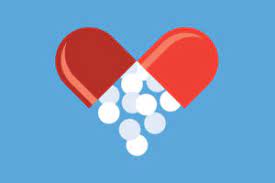Cardiovascular benefits in elderly from antidiabetic drugs.
Researchers found that some types of diabetes medications can lower the risk of heart illnesses when coupled with other diabetic medications in a trial including older military veterans.
According to experts, heart health problems are widespread in diabetics, thus a larger segment of the population may benefit from the research. Drugs for GLP1, DPP4, and SGLT2 were used in the trial.

According to a study published today in the Annals of Internal Medicine, some diabetic drugs may reduce the risk of cardiovascular events when combined with other diabetes treatments.
Researchers compared conventional diabetes treatment plans to three key classes of diabetes medications: GLP1, DPP4, and SGLT2.
Recent clinical trials for novel diabetes medicines, the researchers noted:
- tested the medications only against a placebo, not in competition with one another
- only tested on individuals with heart disease when examining the cardiovascular benefits
The best pharmaceutical class for lowering the risk of cardiovascular disease, even in those without a history of the condition, was something the researchers sought to determine.
They claimed that when compared to DPP4 treatments, GLP1 therapies lowered the risk of adverse cardiovascular events and hospitalisations for heart failure.
Compared to DPP4 medications, SGLT2 therapies did not lower the number of hospitalisations for heart failure or cardiovascular events.
Information about the diabetic drug study
Between 2001 and 2016, the researchers examined the medical records of approximately 100,000 veterans who had been prescribed diabetes drugs including metformin, insulin, or sulfonylurea.
Then, one of the three more recent drugs—GLP1, DPP4, or SGLT2—was introduced. Following up was done until 2019.
Agonists of the GLP1 receptor included:
- Exenatide
- Liraglutide
- Semaglutide
Inhibitors of SGLT2 included:
- Empagliflozin
- Dapagliflozin
- Canagliflozin
Among the DPP4 inhibitors were:
- Alogliptin
- Linagliptin
- Saxagliptin
- Sitagliptin
Participants’ median ages ranged from 67 to 8.5 years, and their median time with diabetes was 8.5 years.
The results revealed:
When compared to DPP4 inhibitors, GLP1 reception agonists have a 20% lower incidence of significant adverse cardiovascular events and heart failure hospitalisations in persons with type 2 diabetes who have never had a heart condition. The risk reduction amounts to around three fewer heart failure episodes, strokes, or fatalities per 1,000 patients using the drug for a year.
When compared to DPP4 inhibitors, SGLT2 inhibitors did not lower hospitalisations for heart failure and cardiovascular events.
Dr. Kathleen Dungan, an endocrinologist at The Ohio State University Wexner Medical Centre, said that therapy should focus on effectiveness in reaching and maintaining treatment objectives for glucose and weight management.
As a result, she said, “some GLP1-based therapies have greater potential to help patients achieve these goals than SGLT2i or DPP-4 inhibitors.” The complexity and method of administration, patient desire, other co-occurring illnesses, side effects, and cost are all person-centered aspects that may be more significant.
Dungan stated that “some limitations [of this study] prevent our ability to directly apply the findings to usual care.” These include a brief follow-up period, a lack of demographic diversity, missing or incomplete data, and nonrandom prescribing patterns, any of which could affect the study findings.
He told us, “This study provides important information on using two classes of diabetes medications, especially for people without known cardiovascular disease.”
The significance of the diabetic medication research
People with diabetes have a younger average age of onset and a twofold increased risk of heart disease. According to the Centres for Disease Control and Prevention, having diabetes increases your risk of developing heart disease.
Additionally, elevated blood pressure, “bad” cholesterol, and triglyceride levels are more prevalent among diabetics. These ailments can make you more likely to experience a cardiovascular incident.
Dr. Sanjay Bhojraj, an interventional cardiologist at Providence Mission Hospital in California, remarked, “This study is a superb example of the new convergence of therapeutics for diabetes and cardiovascular diseases.”
“In the past, the cardiology community has mainly refrained from optimizing diabetic drugs either out of worry over medication-related problems or out of fear of alienating other treating physicians. Primary prevention studies like this one are an appeal to cardiologists to finally enter the fray and treat diabetes like we treat cholesterol or deal with quitting smoking.”
According to Bhojraj, “Now we have real-world data, in a [veterans] population, suggesting a significant decrease in major adverse cardiovascular events using GLP-1 receptor antagonists in patients who have diabetes without prior [cardiovascular disease],” she said. This could help the doctor decide which class of diabetic medication to add to standard-of-care treatment regimens to reduce cardiovascular risk.
It’s interesting to note that both the GLP-1 and SGLT-2 medication classes had positive treatment outcomes in the whole group of individuals undergoing primary and secondary prevention.
The bottom line, the cardiology community needs to take action and incorporate glucose optimization into our treatment strategies, according to Bhojraj, “if we truly want to protect our patients from serious adverse cardiovascular events.”
Treating coexisting conditions common with diabetes
According to a 2019 study, nearly 75% of patients had at least one other chronic health condition when they received a type 2 diabetes diagnosis. 44% of people have two or more conditions.
Diabetes and a number of other common comorbid illnesses include:
- obesity
- dyslipidemia
- blood pressure is high.
- heart condition
- renal illness
- mental health conditions
- sleep problems
- cancer
According to Dr. Minisha Sood, an endocrinologist at Lenox Hill Hospital in New York, “Generally speaking, a GLP1 RA is preferred over an SGLT-2 for the weight benefit in patients with diabetes and obesity – two conditions which overlap more often than not.”
But she added, “This study also reveals another advantage of selecting a GLP1 over an SGLT-2 in patients without cardiovascular disease.”
These medications can help with other comorbid conditions as well, experts point out.
Dr. Rigved Tadwalkar, a cardiologist at Providence Saint John’s Health Centre in California, said, “This research is encouraging and supports a growing body of evidence that these medications have multiple beneficial effects.”
“GLP-1 receptor agonists are currently being used to treat obesity off-label, according to the literature. He informed us that SGLT2 inhibitors are also licensed to treat chronic renal disease and heart failure.”
REFERENCES:
- https://www.medicalnewstoday.com/articles/glp-1-diabetes-drugs-associated-with-fewer-adverse-cardiac-events-in-older-adults
- https://www.healthline.com/health-news/ozempic-glp1-drugs-reduce-heart-attack-risk
- https://www.frontiersin.org/articles/10.3389/fphys.2020.568632/full
For Alzheimer’s disease medications that have been suggested by doctors worldwide are available here https://mygenericpharmacy.com/index.php?therapy=11








